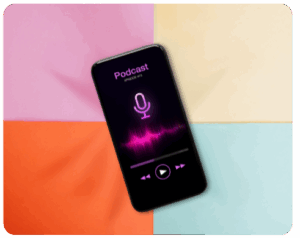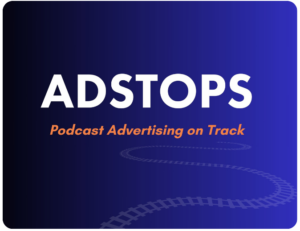
Each type of YouTube ad serves different marketing strategies and goals, from deep engagement with dedicated videos to broader, more frequent exposure with mentions and integrated series. Brands must choose the format that best aligns with their objectives and target audience preferences. In this article we define available YouTube ad types, with examples and pros/cons. Let's dig in!
Dedicated Videos
A dedicated video is a type of YouTube advertisement where the entire video is focused on a single brand, product, or service.
Characteristics
Full-Length Focus: The entire video content revolves around the sponsor.
In-Depth Review: Often includes detailed information, demonstrations, and reviews of the product or service.
Creator's Style: Tailored to match the creator’s style to ensure it resonates with their audience
Pros: Thorough Exposure, Higher Engagement and Brand Trust
This ad type provides comprehensive coverage of the product and is more likely to engage viewers interested in in-depth content while build trust provided the the creator is perceived as authentic.
Cons: High Cost & Viewer Drop -Off
Dedicated videos are typically more expensive due to the amount of content creation involved. CPMs average $50-$150. This format also runs the risk of losing viewers if they’re not interested in the product or if they felt that the recommendation was “paid for” and not authentically given.
Mentions
Mentions are brief advertisements within a video where the creator references or recommends a brand, product, or service.
Characteristics:
Short and Simple: Usually lasts for a few seconds to a minute.
Part of Regular Content: Embedded within the creator’s regular content.
Call to Action: Often includes a call to action such as “Check out this product” or “Visit this website.”
Pros: Less Intrusive, Cost-Effective, and Frequent Exposure
This ad type fits naturally into the content without disrupting the flow and is generally cheaper than dedicated videos. CPMs range from $20-$40 and they can be used more frequently without viewer fatigue.
Cons: Less Depth and Lower Engagement
They provide less detailed information about the product and may be less effective in capturing viewer interest compared to longer segments.
Product Placements
Product placements involve featuring a brand’s product within the video’s content in a way that integrates it seamlessly with the storyline or activity.
Characteristics:
Visual Integration: The product is shown or used naturally within the video.
Subtle Promotion: Less overt than a direct mention or dedicated video.
Brand Visibility: Ensures the product is seen by the audience without explicit promotion.
Pros: Natural Fit, Brand Association and Continuous Exposure:
This ad type feels less like an advertisement, which can be more acceptable to viewers. It associates the product with the creator’s lifestyle and content theme and the product remains visible throughout the video.
Cons: Subtle Impact and Measurement Difficulty
The subtlety of this approach can mean lower direct impact on viewer’s purchasing decisions. It is also almost impossible to measure the direct effectiveness of product placement on its own.
Sponsored Segment
This ad type is an integrated series where a brand sponsors an entire series of videos or a recurring segment within the creator’s content, featuring the brand in each episode.
Characteristics:
Recurring Sponsorship: The brand is featured prominently across multiple videos.
Consistent Exposure: Regular mention or use of the product/service over a period.
For example, Jomboy does a Question of the Day sponsored by X brand - Hot Ones just does each episode brought to you by X brand - you only see brand logo, never product on-screen.
Pros: Long-Term Engagement, Brand Familiarity and Content Consistency
With this ad type brands have an opportunity to build a sustained relationship with the audience over time. It increases brand recognition and trust through repeated exposure and ensures consistent brand presence within the creator’s content.
Cons: Higher Commitment, Viewer Fatigue, and Complex Coordination
This approach requires a longer-term commitment from both the brand and the creator and there is a risk viewers may tire of repeated exposure to the same brand. It is also more complex to plan and execute compared to one-off promotions.
Skippable Ads
Skippable ads, also known as TrueView ads, are video advertisements that viewers can choose to skip after watching the first 5 seconds.
Characteristics:
Skip Option: Viewers can click a "Skip Ad" button after 5 seconds to continue to the content they intended to watch.
Variable Length: Typically 12 seconds to several minutes long, allowing for more flexible storytelling.

Pros: Viewer Control, Cost-Effective and Higher Engagement
Skippable ads are less intrusive since viewers can choose to skip them but those who opt to watch the ad are more engaged. Additionally, advertisers only pay for views that last at least 30 seconds or when viewers interact with te ad.
Cons: Skip Rate and Short Timeframe
Many viewers may skip the ad, reducing the total number of complete views. These ads are highly susceptible to being “viewed” by bots, as well, meaning the advertiser pays for bogus impressions.
Overall, advertisers only have 5 seconds to capture viewer interest before they can click that skip button.
Non-Skippable Ads
Non-skippable ads are video advertisements that play start to finish before viewers can access their desired content.
Characteristics:
No Skip Option: Viewers cannot skip these ads, which means they must watch the full ad to proceed to their chosen video.
Fixed Length: Usually between 15 to 20 seconds long, though some can be up to 30 seconds.

Pros: Guaranteed Exposure and High Visibility
This ad type ensures the advertiser's message is fully viewed and is effective for brand awareness campaigns.
Cons: More Intrusive and Viewer Frustration
However, it can be seen as disruptive to the viewing experience and may lead to viewer annoyance or drop-off.
Conclusion
Understanding the different types of YouTube ads is crucial for creating an effective campaign strategy. As we have shared throughout this articel each format presents advantages and potential drawbacks but choosing the best fit for you should be based on your specific goals and target audience. By leveraging the strengths of each ad type, you can maximize engagement, reach, and conversion rates, ultimately driving better results for your campaigns.
Check out this handy YouTube Ad Types chart you that you can reference when planning your next campaign!
ADOPTER Media
We believe in data-driven results and are dedicated to helping everyone make better decisions and advance their work using a platform trusted by Fortune 500 companies and beloved regional brands alike. Have a question about podcast advertising or YouTube sponsorship? Connect with us and we will be happy to help!




